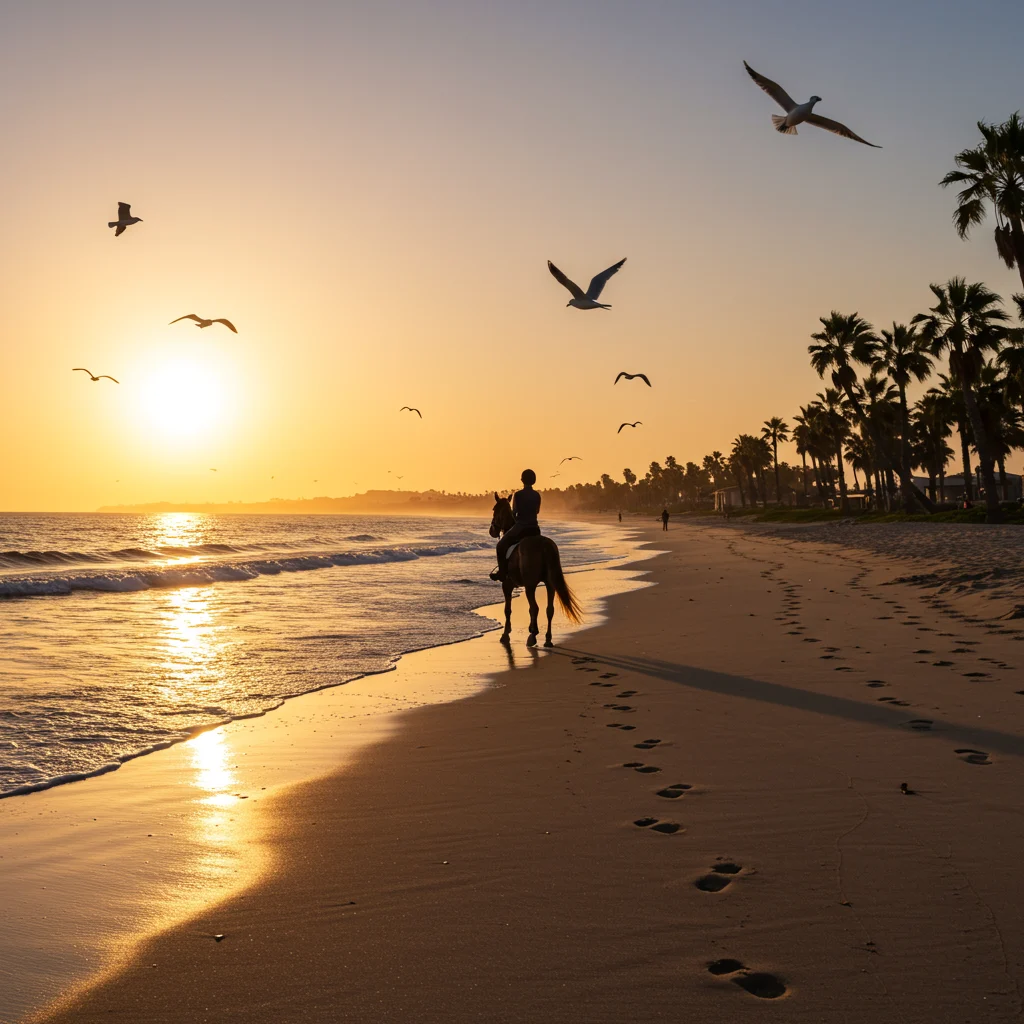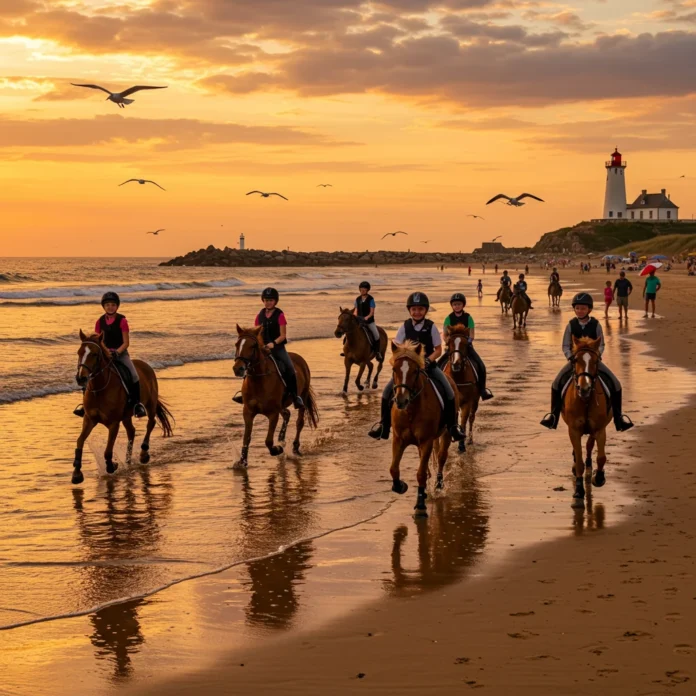Introduction to Beach Horseback Riding Adventure
Few experiences compare to the exhilaration of beach horseback riding. The rhythmic sound of hooves meeting sand, the salt-tinged breeze, and panoramic ocean views combine to create an adventure that is both invigorating and serene. Whether we are seasoned equestrians or complete beginners, riding along a coastline offers a unique connection to both nature and our equine companions.

This activity blends the timeless joy of horseback riding with the singular beauty of the world’s most scenic beaches, promising memories that linger long after the ride ends.
What Makes Beach Horseback Riding Unique?
Unlike trail rides through forests or mountains, riding horses on the beach introduces a dynamic environment shaped by shifting sands, tides, and open horizons. The interplay of natural elements enhances our senses: sunlight dancing on the waves, the invigorating scent of the ocean, and the gentle sway of the horse beneath us.

The absence of urban noise and the vast, open space invite a feeling of freedom and tranquility that is hard to replicate elsewhere. This distinctive combination is what sets beach horseback riding apart from other equestrian adventures.
History of Horseback Riding on Beaches
The tradition of horseback riding along coastlines spans centuries. Historically, horses served as vital companions for fishermen, traders, and explorers navigating shorelines. For many cultures, the beach was a natural route and a place of work, recreation, and ceremony.
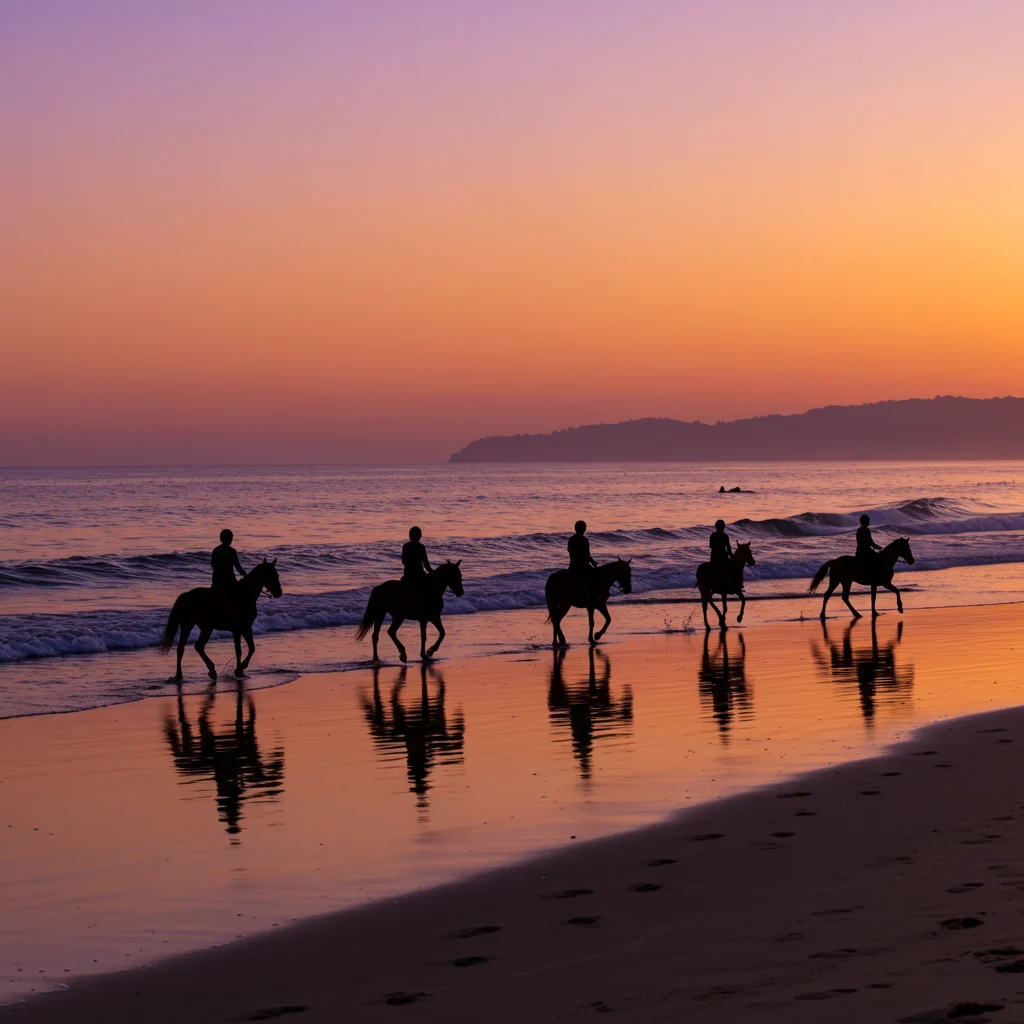
Today, the practice continues as both a nod to history and a modern leisure activity, blending heritage with the thrill of adventure.
Why Try Beach Horseback Riding?
We are often drawn to activities that offer both excitement and relaxation, and beach horseback riding delivers on both fronts. The chance to experience the natural world from horseback, paired with the soothing ambiance of the sea, makes these rides particularly appealing.
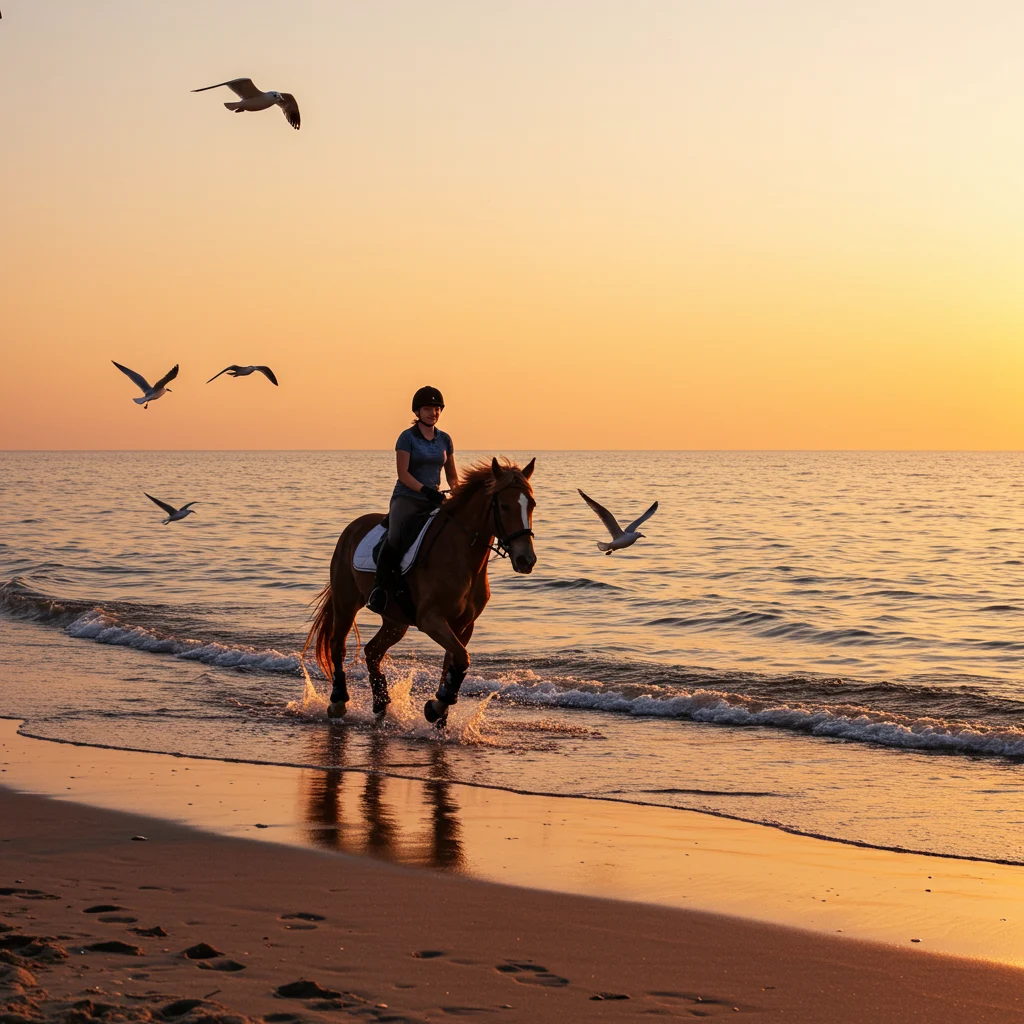
Top Benefits of Beach Horseback Riding
There are several compelling reasons to consider a beach ride:
- Unique scenic perspectives that are only accessible on horseback
- Physical activity that engages core muscles and improves posture
- Emotional well-being from connecting with animals and nature
- Opportunities for group bonding or romantic moments
For more inspiration on the joys of riding outdoors, read our exploration of horseback rides in nature.
Physical and Mental Health Advantages
Horseback riding is more than just recreation; it promotes physical fitness by engaging muscles, improving balance, and encouraging cardiovascular activity. Mentally, the calming rhythm of the horse and the meditative setting of the beach can help reduce stress and foster a sense of peace.
Many riders report increased confidence and clarity after their experience, making it a valuable activity for both body and mind.
Is Beach Horseback Riding Right for You?
We often wonder if a new adventure fits our interests, physical abilities, or travel plans. Beach horseback riding is surprisingly accessible, but it’s important to consider personal factors before booking a tour.
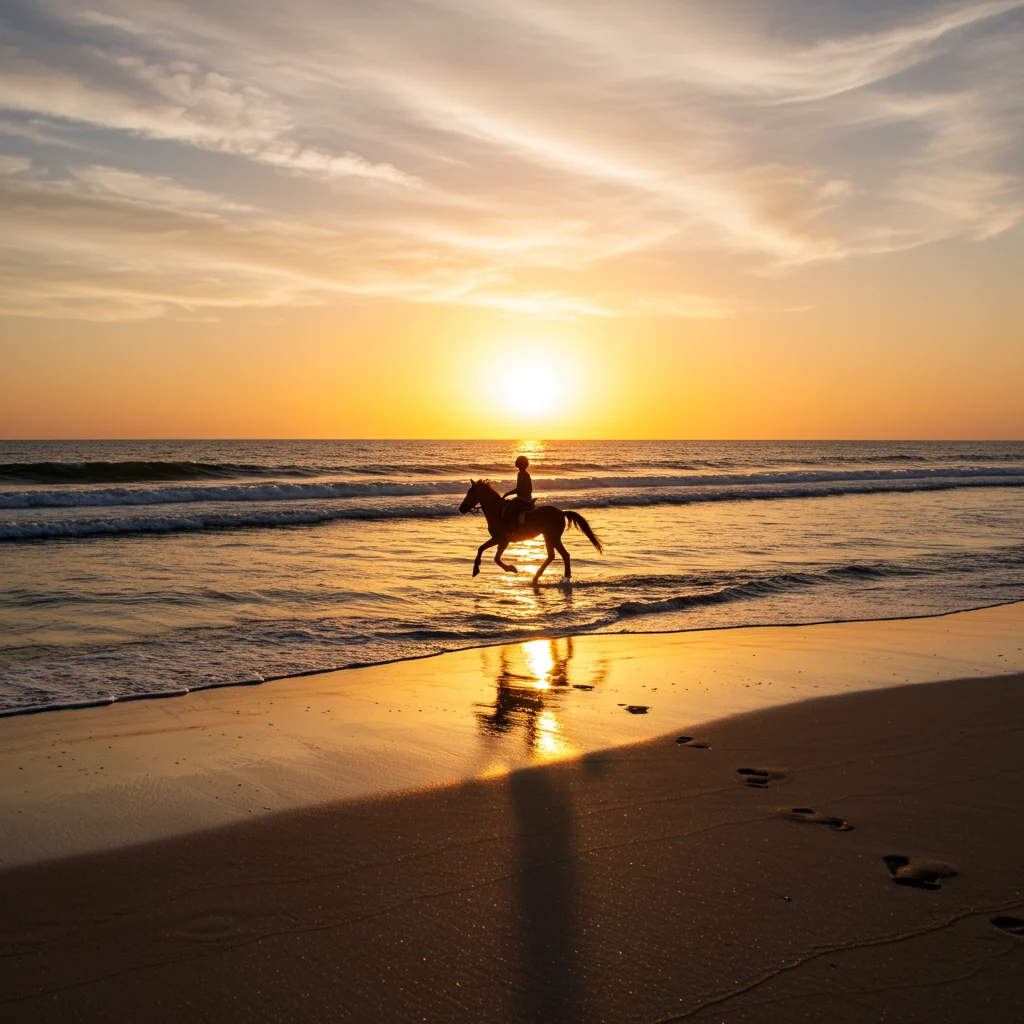
Who Can Participate?
Most beach horseback riding tours welcome a broad range of participants, from families and couples to solo travelers seeking a unique experience.
Age and Skill Level Requirements
Tour operators typically set minimum age requirements, often around seven or eight years old, to guarantee safety. Many companies offer gentle horses and experienced guides, making the activity suitable for beginners and children, as well as experienced riders.
Physical Fitness Considerations
While horseback riding does not require intense athleticism, basic mobility and balance are important. Riders should be comfortable mounting, dismounting, and maintaining a seated posture for the duration of the ride.
Best Destinations for Beach Horseback Riding
The world offers a wealth of beach horseback riding destinations, each with its own charm. From iconic stretches of sand in the United States to international paradises, options abound for every traveler.

Top Beaches in the United States
Some of the most popular spots include:
- Amelia Island, Florida – Known for its wide, hard-packed sands and gentle surf
- Pismo Beach, California – Offers dramatic cliffs and Pacific views
- Outer Banks, North Carolina – Famous for wild horses and pristine stretches
If you are seeking a Caribbean adventure, you may want to learn about Puerto Rico’s most stunning beaches for horseback riding.
International Hotspots for Beach Riding
Internationally, destinations like Tulum in Mexico, Costa Rica’s Pacific coast, and South Africa’s Wild Coast offer breathtaking rides along tropical or rugged shorelines. Each location provides its own unique scenery and cultural flair.
Hidden Gems: Lesser-Known Beach Trails
Beyond the well-known beaches, there are secluded trails on remote islands or private stretches of coastline. These hidden gems promise tranquility and a more intimate riding experience, perfect for those seeking something off the beaten path.
How to Choose the Perfect Beach for Riding
Selecting the ideal location can elevate your riding adventure. We recommend considering several factors to match your preferences and expectations.
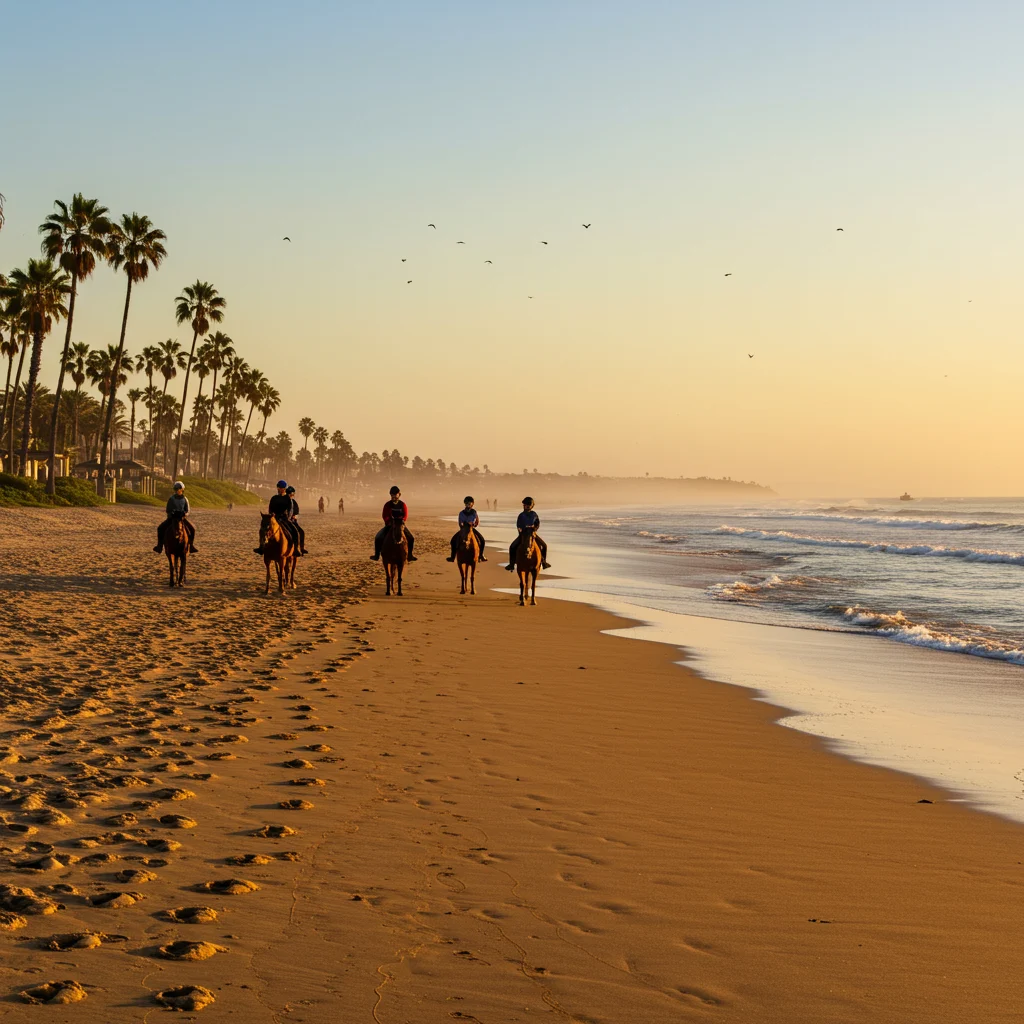
What to Look for in a Beach Horseback Riding Tour
Key considerations include:
- Beach conditions (width, sand quality, tides)
- Length and route of the ride
- Group size and atmosphere
- Experience level required
Researching these factors helps ensure a memorable and comfortable experience.
Evaluating Tour Companies and Guides
Choosing a reputable operator is essential. Look for companies with certified guides, positive reviews, and clear safety protocols. It’s wise to ask questions about horse care, rider instruction, and emergency procedures.
For more on selecting the right tour, our post on unexpected delights on horseback riding in Puerto Rico offers helpful insights.
What to Expect on a Beach Horseback Riding Tour
Understanding the flow of a typical beach ride helps set appropriate expectations and reduces pre-ride nerves, especially for first-timers.

Pre-Ride Orientation and Safety Briefing
Most tours begin with an introduction to the horses, a review of safety guidelines, and basic riding instruction. Guides explain how to steer, stop, and communicate with your horse, as well as what to do if unexpected situations arise.
Meeting Your Horse: What Happens First?
Riders are paired with horses that suit their experience and comfort level. Taking a few moments to greet your horse and get acquainted can set a positive tone for the ride.
Typical Itinerary of a Beach Riding Adventure
A standard outing usually includes a guided ride along the shoreline, opportunities to trot or canter (for those comfortable), and time for photos or a short rest. Some tours incorporate inland trails or passes through scenic areas before reaching the water.
How Long Do Beach Rides Last?
Most beach rides range from one to two hours, though longer excursions are available in some locations. The duration often depends on the group’s preferences, the terrain, and the specific tour package.
Group vs. Private Beach Rides: Which Should You Choose?
When planning your ride, consider whether a group or private experience best fits your needs. Each option offers distinct advantages.

Pros and Cons of Group Tours
Group tours are often more affordable and provide a social atmosphere, making them ideal for families or those who enjoy meeting fellow travelers. However, the pace and route may be less flexible, and larger groups can sometimes feel less personal.
Advantages of Private Beach Rides
Private rides allow for a customized experience, tailored to your pace and interests. They’re perfect for special occasions or riders seeking a more intimate connection with their horse and the environment.
Essential Gear and Clothing for Beach Horseback Riding
Wearing appropriate gear contributes to both comfort and safety during your ride. Preparing a thoughtful packing list ensures you have everything needed for a smooth outing.
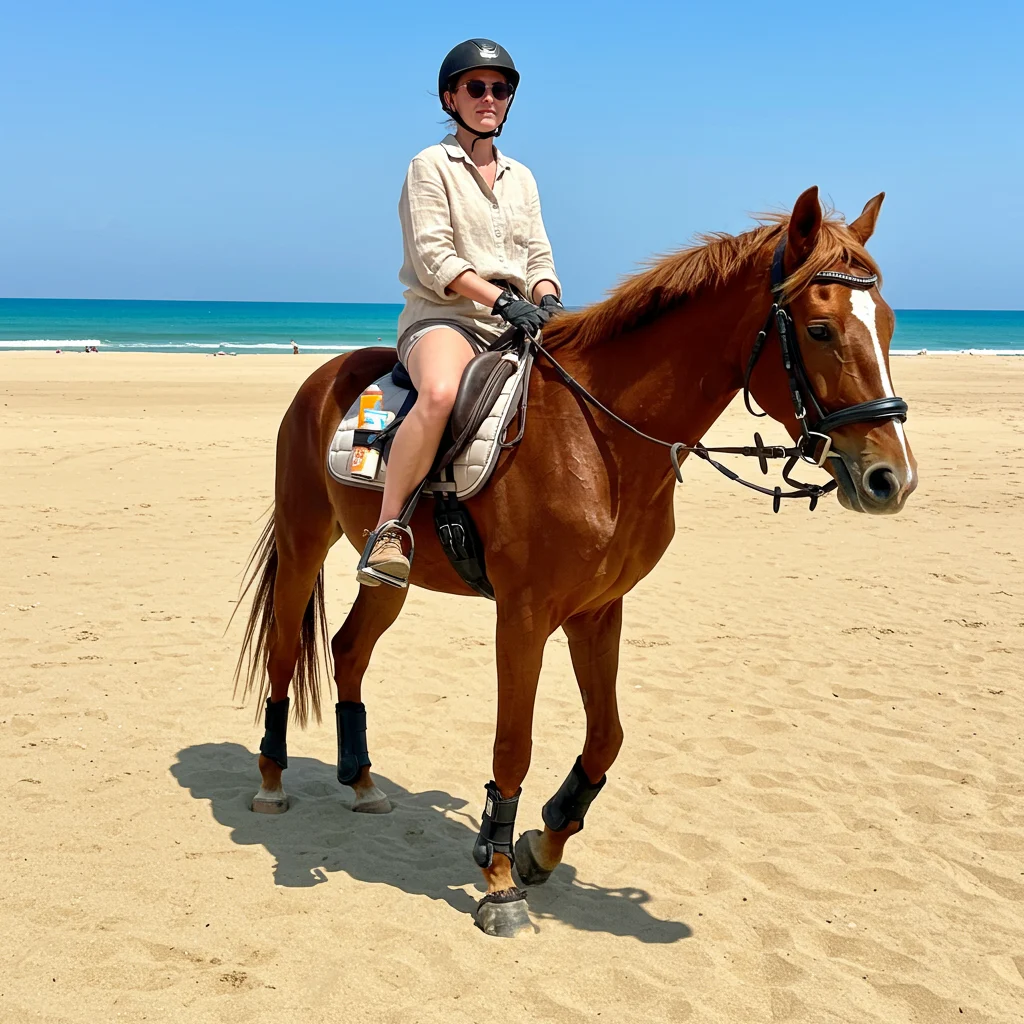
Recommended Attire for Comfort and Safety
We recommend lightweight, breathable clothing that covers your arms and legs to protect against sun and potential scrapes. Neutral or earth tones help minimize distractions for the horses.
Footwear: What Should You Wear?
Closed-toe shoes with a small heel, such as riding boots or sturdy sneakers, are best. Avoid sandals or open footwear, as they offer little protection and can slip from stirrups.
Helmets and Protective Equipment
While some tour operators provide helmets, it’s wise to bring your own if possible. Additional protective gear, like gloves or padded vests, can further enhance safety, especially for beginners or children.
Packing List: What to Bring Along
- Sunscreen and sunglasses
- Reusable water bottle
- Camera or smartphone for photos
- Light jacket or rain poncho (weather dependent)
- Personal identification and booking confirmation
Preparing for Your First Beach Horseback Ride
A little preparation goes a long way in making your first ride enjoyable and stress-free. Familiarizing yourself with basic techniques and safety protocols can boost your confidence.

Tips for Beginners: Getting Comfortable with Horses
Spend time near your horse before mounting. Speak softly, offer gentle pats, and observe the horse’s body language. This helps establish trust and calm any nerves.
How to Mount and Dismount Safely
Guides will demonstrate the safest way to get on and off your horse. Always use the designated mounting block or follow the guide’s instructions, maintaining a firm grip on reins and saddle.
Basic Riding Techniques for the Beach
Learn to sit upright, keep heels down, and maintain gentle contact with the reins. Beach terrain can be uneven, so balance and flexibility are important.
How to Communicate with Your Horse
Horses respond to subtle cues. Use gentle pressure with your legs to move forward and soft pulls on the reins to slow or stop. Consistency and calmness are key to effective communication.
Safety Tips for Beach Horseback Riding
Safety should always be our top priority. Understanding the unique aspects of the beach environment helps us ride responsibly and confidently.
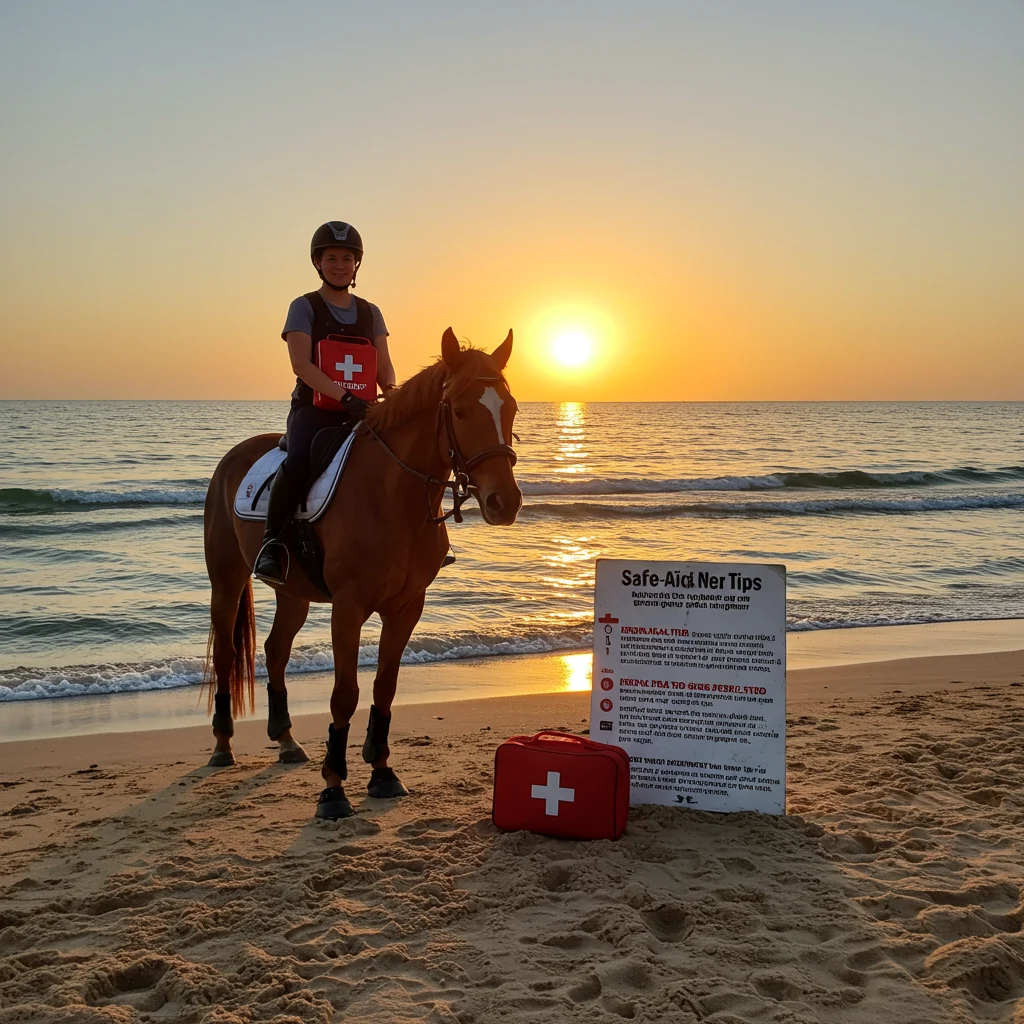
Understanding Beach Terrain and Hazards
Beaches can present soft sand, hidden debris, and sudden changes in elevation. Stay alert and follow your guide’s instructions to avoid areas that may be unsafe for horses or riders.
Weather Considerations and Tides
Check weather forecasts and tide charts before your ride. Rides may be rescheduled in case of storms, high winds, or dangerous surf. Low tide generally provides firmer sand for horses.
What to Do in Case of Emergency
Listen carefully to the pre-ride briefing on emergency procedures. If you feel unsafe or notice a problem with your horse, alert your guide immediately. Carrying a fully charged phone and knowing the local emergency number is always prudent.
Horse Welfare and Ethical Considerations
Rider enjoyment goes hand in hand with horse welfare. We have a responsibility to choose tours that treat their animals with compassion and respect.

How Are Horses Cared For?
Reputable operators provide regular veterinary care, balanced diets, and proper rest for their horses. Observe the animals’ condition and demeanor—healthy, well-groomed horses are a positive sign.
Choosing Responsible Tour Operators
Ask about feeding, exercise routines, and how many rides each horse completes per day. Ethical companies limit workloads and rotate horses to prevent fatigue and injury.
Environmental Impact of Beach Horseback Riding
As stewards of natural spaces, we must consider how our activities affect the local ecosystem. Beach horseback riding can be sustainable when done thoughtfully.

How Do Tours Minimize Their Footprint?
Responsible operators follow designated trails, avoid nesting areas, and clean up after their horses. Some even participate in conservation initiatives or support local environmental groups.
Respecting Local Wildlife and Ecosystems
Riders should avoid disturbing wildlife, refrain from littering, and respect posted signs. Minimizing noise and staying on marked paths helps preserve the beach for future generations. For those interested in natural attractions, our guide to Puerto Rico’s must-see natural sites highlights more ways to appreciate nature responsibly.
Capturing Your Beach Riding Adventure
Photographs allow us to relive and share the magic of our beach rides. With the right equipment and a few creative tips, you can preserve stunning memories.

Best Cameras and Gear for Photos
Compact cameras, smartphones with waterproof cases, or action cameras like GoPros are popular choices. Consider a wrist strap or chest mount for hands-free operation.
Tips for Taking Stunning Beach Riding Photos
Shoot during golden hour for warm, flattering light. Try different angles—over the horse’s ears, from ground level, or wide shots featuring the shoreline. Capture candid moments of interaction with your horse.
As experts often say:
“The best photos are those that capture the genuine connection between rider, horse, and landscape.”
Sharing Your Experience on Social Media
Posting your adventure online can inspire others and help promote responsible tourism. Tag the tour company, use relevant hashtags, and share your honest impressions to help fellow travelers make informed choices.
Beach Horseback Riding for Special Occasions
A beach ride makes any event unforgettable, whether you’re celebrating romance, milestones, or team achievements.

Planning a Romantic Beach Ride
Many operators offer sunset rides or private tours designed for couples. These experiences often include special touches like champagne or personalized photos.
Celebrating Birthdays and Anniversaries
Beach horseback riding is a memorable way to mark birthdays or anniversaries, offering a unique activity that stands out from traditional celebrations.
Organizing Group Events and Team Building
Group rides foster camaraderie and shared accomplishment, making them ideal for corporate retreats or family reunions. Some companies provide team-building exercises or picnic options as part of the package.
Frequently Asked Questions About Beach Horseback Riding
Newcomers often have questions about logistics, safety, and requirements. Here, we address some of the most common inquiries.
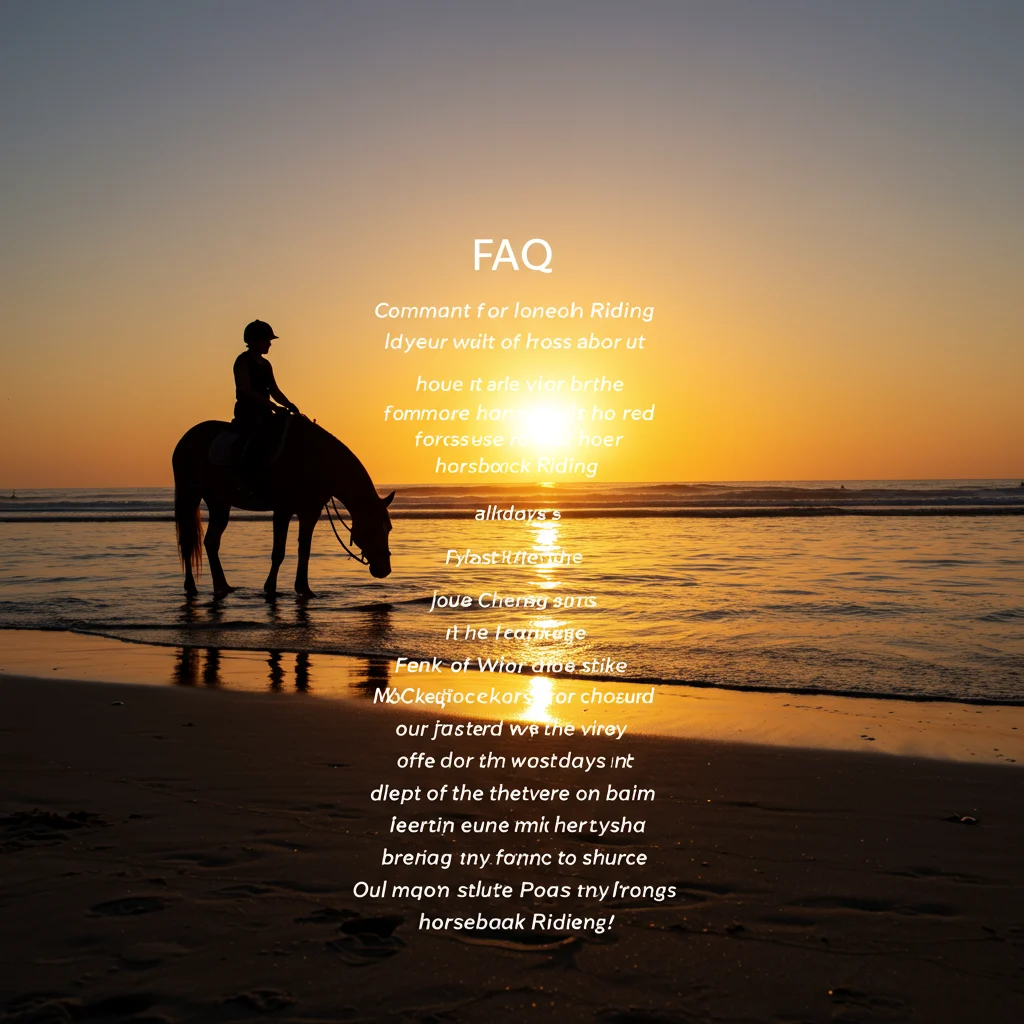
Is Beach Horseback Riding Safe for Kids?
With appropriate supervision, properly fitted helmets, and gentle horses, beach rides can be safe and enjoyable for children. Always confirm minimum age and weight limits with your tour operator.
Do You Need Previous Riding Experience?
Most beach rides cater to all levels, including first-timers. Guides provide instruction and assistance throughout the journey, so prior experience is not necessary.
What Happens if the Weather Changes?
Tour companies monitor weather closely and may reschedule or cancel rides if conditions become unsafe. Riders typically receive refunds or credits in these situations.
How Much Does a Beach Horseback Ride Cost?
Pricing varies by destination, duration, and type of ride. Understanding the factors that influence cost helps set realistic expectations.

Factors Affecting Pricing
- Location and popularity of the beach
- Length of the ride
- Group vs. private tour
- Included amenities (photos, refreshments, transfers)
Are There Discounts or Packages Available?
Many operators offer group rates, seasonal promotions, or bundled packages with other activities. Booking in advance or during off-peak times can also yield savings.
Tips for Making the Most of Your Beach Riding Experience
To fully enjoy your adventure, approach the ride with an open mind and a spirit of curiosity.
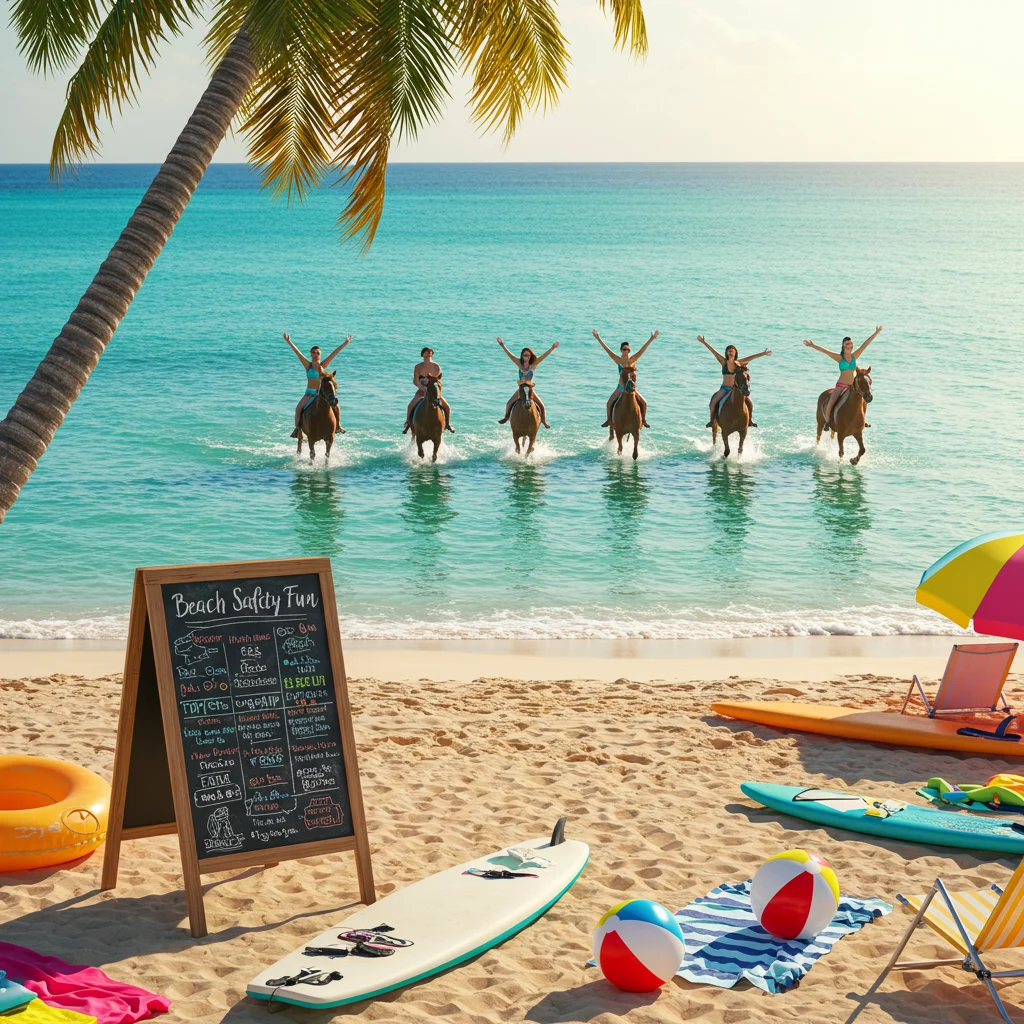
How to Relax and Enjoy the Moment
Focus on your breath, the movement of your horse, and the beauty around you. Let go of distractions and allow yourself to be present.
Connecting with Your Horse and Nature
Take time to appreciate the partnership with your horse and the natural setting. This mindful approach deepens the sense of fulfillment and wonder.
If you are seeking the ultimate Caribbean experience, our guide to Puerto Rico’s best beaches offers valuable suggestions.
Common Mistakes to Avoid
Awareness of common pitfalls can help prevent discomfort or injury and ensure a smooth ride for everyone.

How to Prevent Discomfort or Injury
- Follow your guide’s instructions at all times
- Wear proper footwear and attire
- Stay hydrated and use sun protection
- Communicate any concerns or discomfort promptly
Etiquette and Rules for Beach Riders
Respect for others and the environment is central to a positive riding experience.
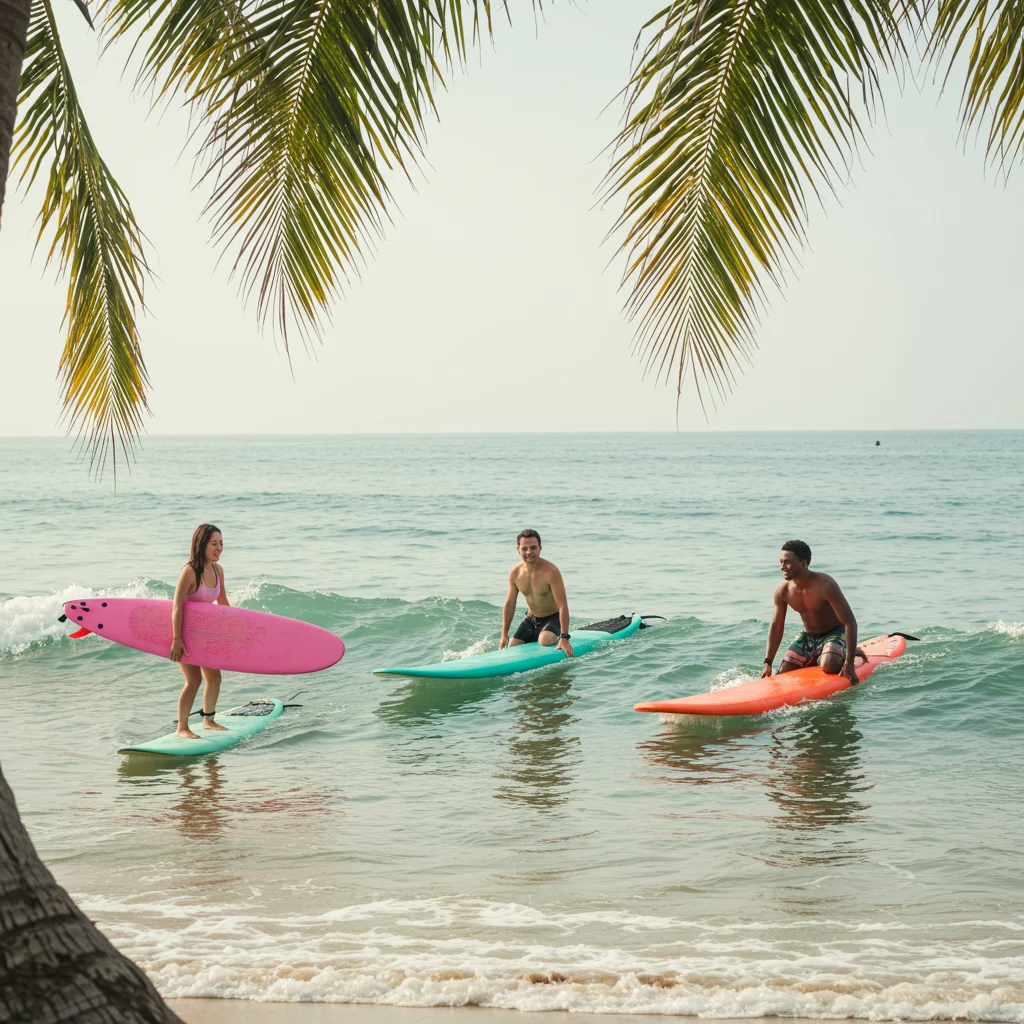
Respecting Other Beachgoers
Yield to walkers, swimmers, and families enjoying the beach. Maintain a safe distance and keep noise to a minimum to avoid startling people or animals.
Following Local Regulations
Abide by posted signs, designated riding areas, and any restrictions regarding wildlife or sensitive habitats. Compliance helps preserve access to these beautiful locations for all.
Stories from the Saddle: Memorable Beach Riding Experiences
Personal stories bring the magic of beach horseback riding to life, highlighting the joy, challenge, and wonder experienced by riders and guides alike.
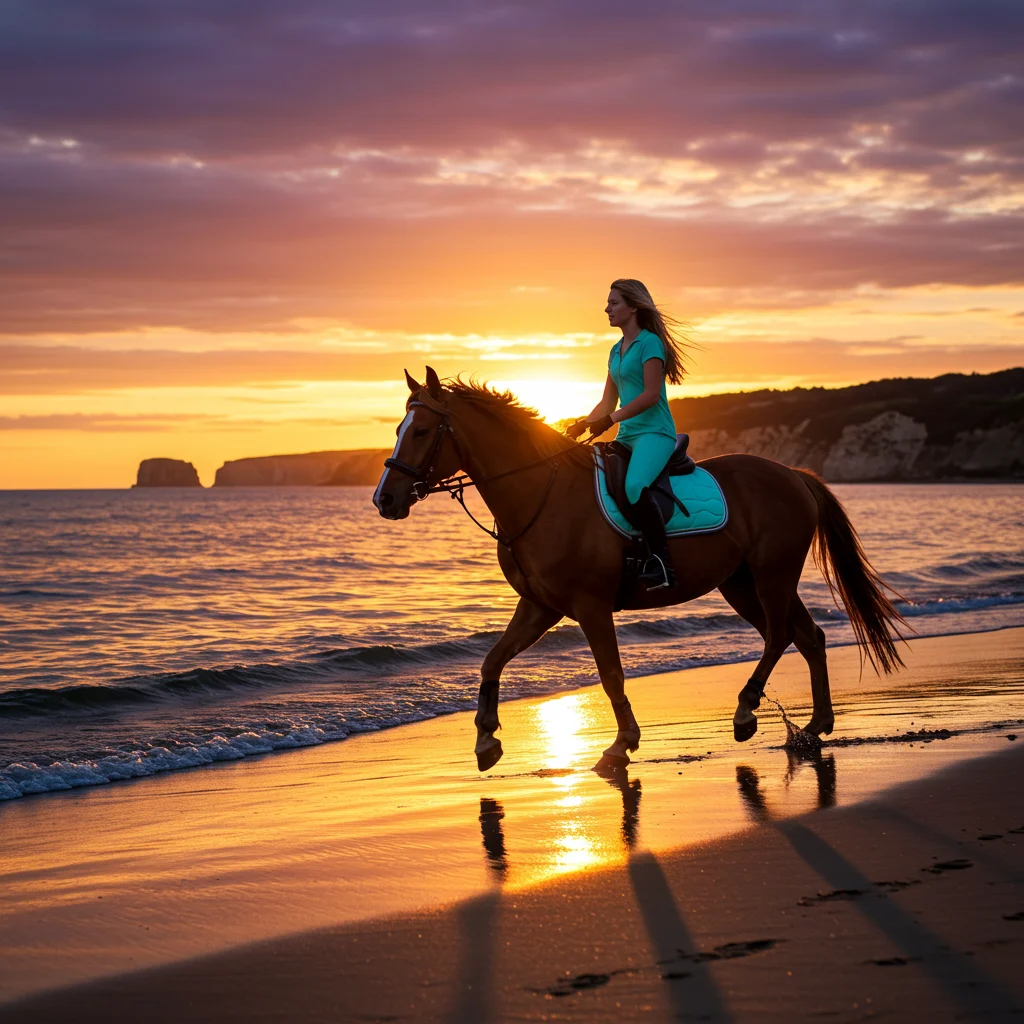
Testimonials from First-Time Riders
First-timers often describe a sense of awe at the scenery and the comfort provided by patient guides and gentle horses. Many recount how initial nerves quickly gave way to exhilaration and happiness.
Unforgettable Adventures Shared by Guides
Experienced guides share tales of guests conquering fears, witnessing dolphin pods or sea turtles, and forming lasting bonds with their horses. These moments are a testament to the transformative power of the beach riding experience.
How to Book Your Beach Horseback Riding Adventure
Booking your ride is straightforward, but taking a few extra steps can help secure the best possible experience.
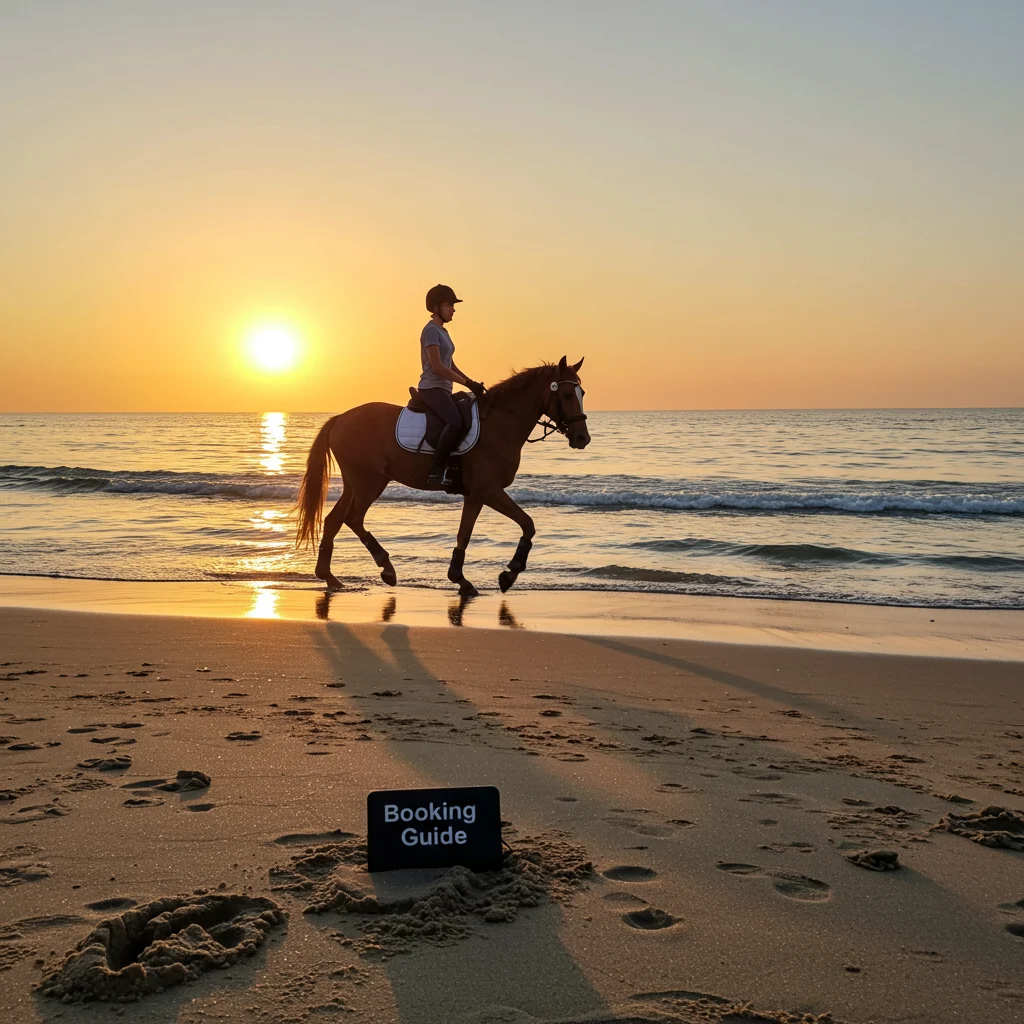
Finding Reputable Booking Platforms
Use official tour websites, trusted travel agencies, or recommendations from fellow travelers. Look for platforms with transparent pricing, clear cancellation policies, and verified customer reviews.
What Information Will You Need to Provide?
- Names and ages of all riders
- Riding experience level
- Any special needs or requests
- Contact information and payment details
Conclusion: Embrace the Adventure and Ride the Waves
Beach horseback riding is a thrilling, restorative activity that connects us with nature, our companions, and ourselves. The experience combines the joy of riding with the sensory pleasures of the ocean, creating memories that endure.

We encourage you to consider Puerto Rico Tour for your next adventure. Their dedication to exceptional experiences and the stunning beauty of Puerto Rico’s beaches make them an outstanding choice for riders of all levels.
Next Steps: Planning Your Own Beach Horseback Riding Experience
Take the first step by researching destinations, reviewing tour options, and preparing your gear. With thoughtful planning, your beach horseback riding adventure will be unforgettable—full of discovery, excitement, and connection.
